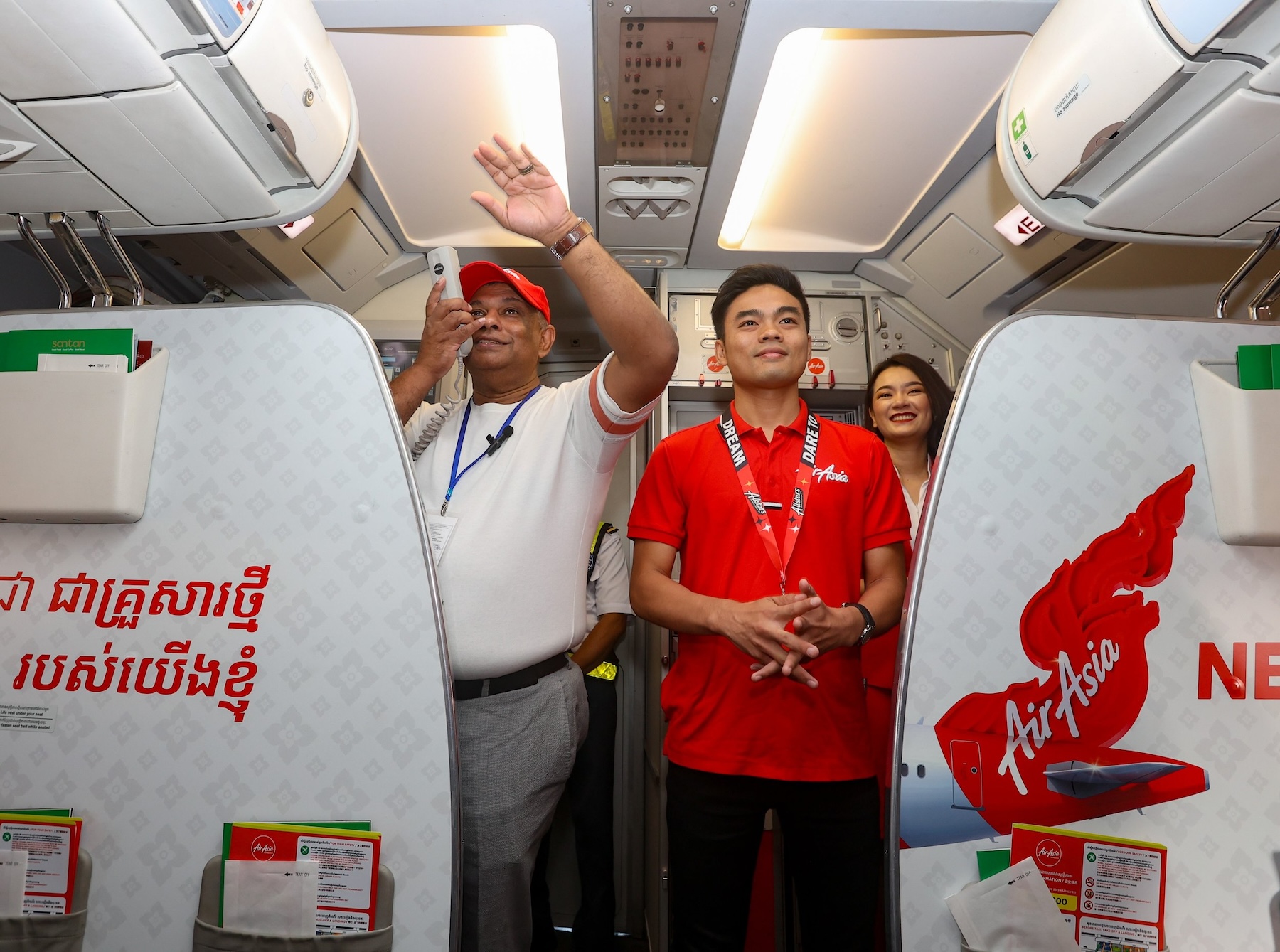
AirAsia Cambodia Makes First Flight
AirAsia Cambodia started operations on Thursday with a historic inaugural flight, KT102, connecting Phnom Penh, Cambodia's capital, to Siem Reap,…

An Embraer E190-E2 jet (Photo: Embraer)
On Aug. 19, 1969, the Brazilian government formally instituted the Empresa Brasileira de Aeronáutica, globally known as Embraer. On this day 50 years ago, what has grown to become the third global producer of civilian aircraft received its distinctive name, although it had been in operation already for a significant period of time beforehand.
Back in 1959, a young military pilot named Ozires Silva entered the Instituto Tecnológico de Aeronáutica operated by the Brazilian Air Force to study Aeronautical Engineering. Graduating in 1962, Silva was quickly drafted to join a team that was working on IPD-6504, a project for a regional aircraft that could serve two needs.
The first need was to transport at least fifteen passengers within a 1,200-mile range. The second, loftier goal was to transform the Brazilian aviation industry for good. In both, the EMB-110 Bandeirante succeeded, producing more than 500 airframes and giving Brazil a foothold in the aircraft manufacturing field.
The Bandeirante was followed by the EMB-120 Brasilia, also a twin-engine turboprop. In developing both aircraft, the company was gaining know-how and experience by designing and building other aircraft including the EMB-202 Ipanema, an agricultural workhorse so perfect for crop-dusting that owns the 80 percent of the Brazilian market today.
The 1970s saw additional types being produced, including the EMB-326 Xavante, a military aircraft. Embraer was gaining expertise and skill, anticipating that the 80s would be a major milestone for the company, which proved to be correct.
Under Silva’s command, Embraer stepped up to its first binational project, the Italian-Brazilian AMX, a ground attack aircraft jointly developed to replace both countries’ aging fighters. The other major military project of the company was surpassing all expectations as the EMB-312 Tucano is dubbed in the builder’s history as its first international blockbuster.
But there was a market segment that needed to be reached by the conglomerate. It was time to build the regional jet portfolio.
In 1989’s Paris Air Show, the Brazilian company presented a turbofan engined version of the Brasilia running by the name of EMB-145 Amazon, with a desired first flight by mid-1990. Brazilian economics, however, halted development in November 1990.
In 1991, when development resumed, the design suffered a major revision, lost the Amazon name and became just the EMB-145. The two engines were tail-mounted and the original first flight date was moved to 1994.
In December 1994, the state-owned company was not exempt from the economic right-handed privatization wave and Embraer became a private company. The project was, once again, in deep waters.
Finally, on Aug. 11, 1995, the ERJ-145 flew for the first time and became one of the milestones of the company. Embraer predicted to break even if they sold 400 airframes. To this day, it has sold more than 1,300 and created a family of aircraft including the Dash 135, Dash 140, the military Dash 99 and the Legacy 600/650 executive version.
The jet is being built under license in China by Harbin and has become a regular actor in the regional jet market in many countries, including the U.S. with carriers such as American Eagle Airlines, ExpressJet Airlines and CommutAir. Besides that, it has become the platform for its evolution, the E-Jets family.
A child of the 2000s, the E-Jet outsold the ERJ family with its E170, E175, E190 and E195 variants. The new aircraft featured twin-mounted underwing engines and a longer and wider fuselage capable of carrying additional passengers.
The new E-Jets found themselves expanding the bounds of regional jet travel in the United States, blurring the lines between regional and mainline operations. Some of the longest flights operated by the E-Jet include New York-Dallas and Fayetteville, Ark. to Los Angeles.
In recent years, the E2 line of E-Jet products is set to fight with the Airbus A220 for the leadership of the 150 or less seat market. Embraer is not alone in this competition as it has recently joined forces with Airbus’ archrival, Boeing, creating Boeing Brasil Commercial. The deal formalized earlier this year and that will effectively come into play in 2020.
The alliance with Boeing will also help the Brazilian builder’s main military product, the KC-390 multi-purpose military transport to gain momentum and customers worldwide.
In the aviation industry, half a century means a lot considering all the technological advancements the industry has seen since 1969 and not all of the manufacturers around in 1969 are around anymore. Embraer, however, is turning 50 and its future seems brighter than ever.
Since a little kid, Pablo set his passions in order: aviation, soccer, and everything else. He has traveled to various destinations throughout South America, Asia, and Europe. Technology and systems expert, occasional spotter, not-so-dynamic midfielder, blogger, husband, father of three cats; he believes that Latin America's aviation industry past, present, and future offer a lot of stories to be told.
Receive a daily dose of the airline industry's top stories along with market insights right in your inbox.

AirAsia Cambodia started operations on Thursday with a historic inaugural flight, KT102, connecting Phnom Penh, Cambodia's capital, to Siem Reap,…

Kenya Airways (KQ) has suspended flights to Kinshasa, the capital of the Democratic Republic of the Congo (DRC). This decision was…

Committees in the United States Congress have finalized their drafts for the latest version of the FAA Reauthorization Bill. The…



